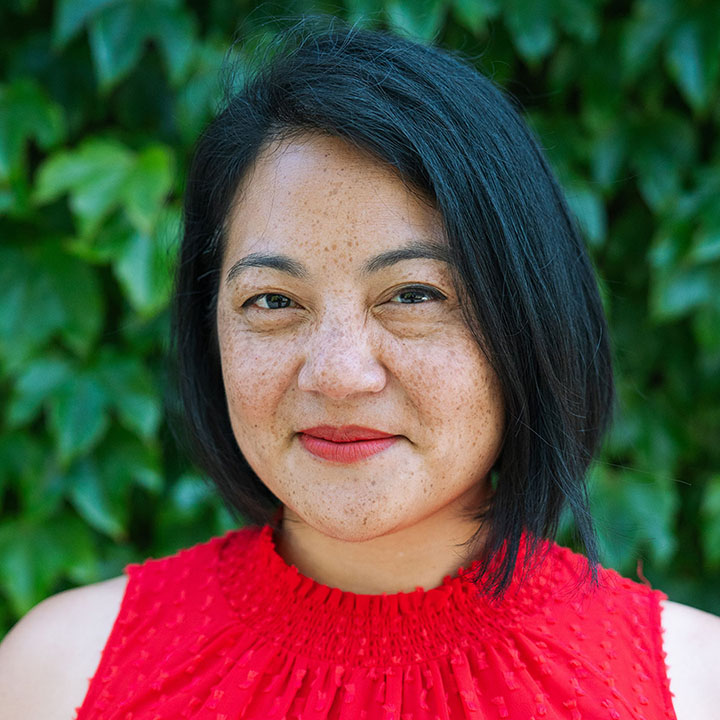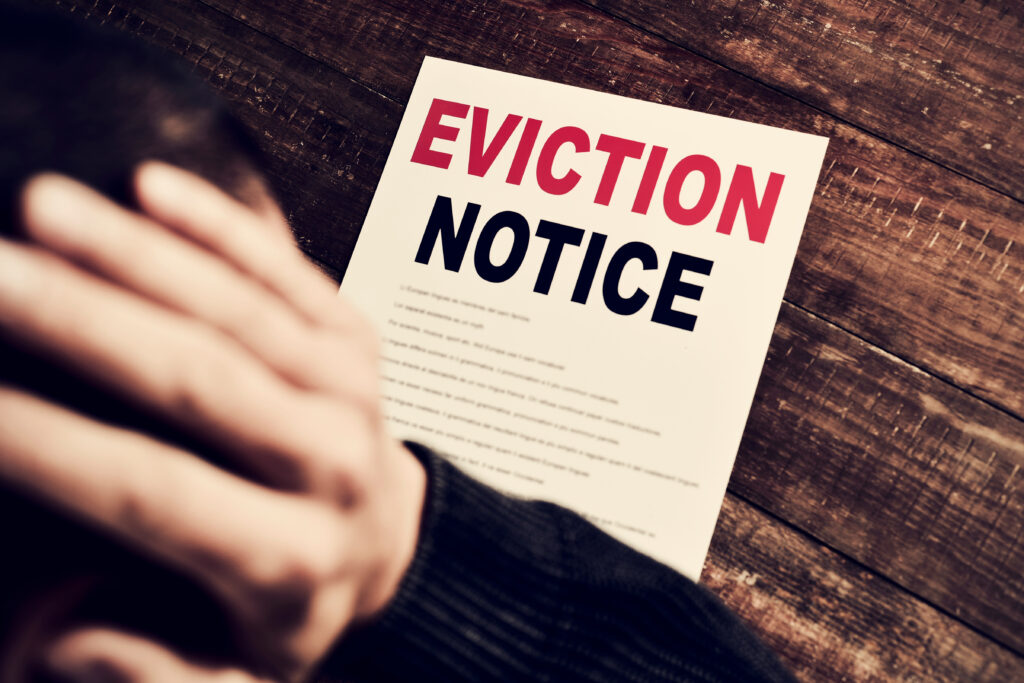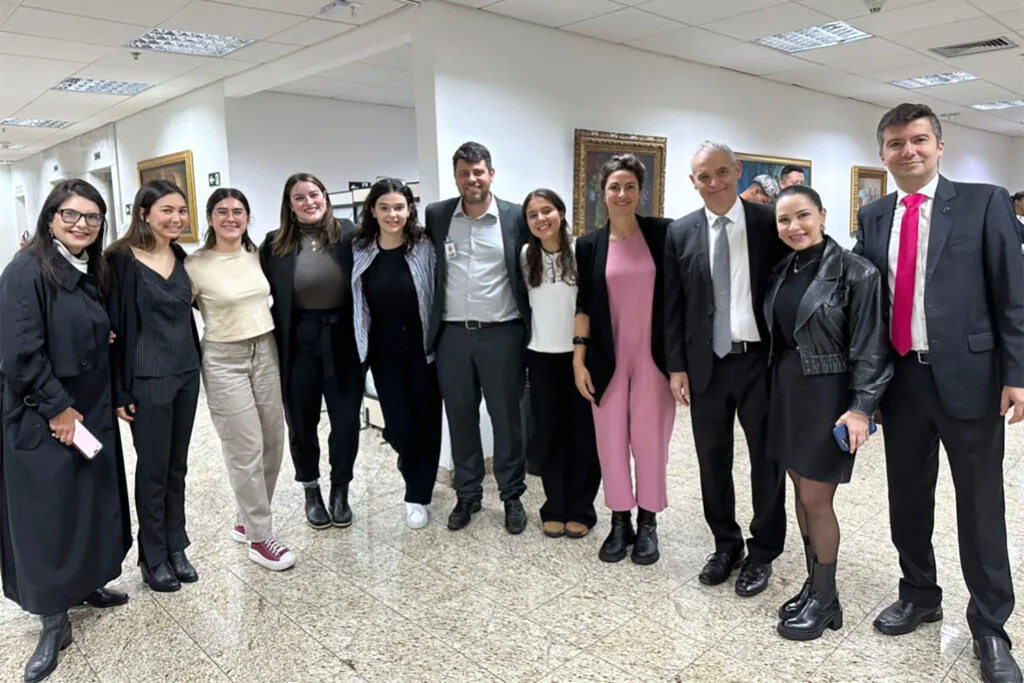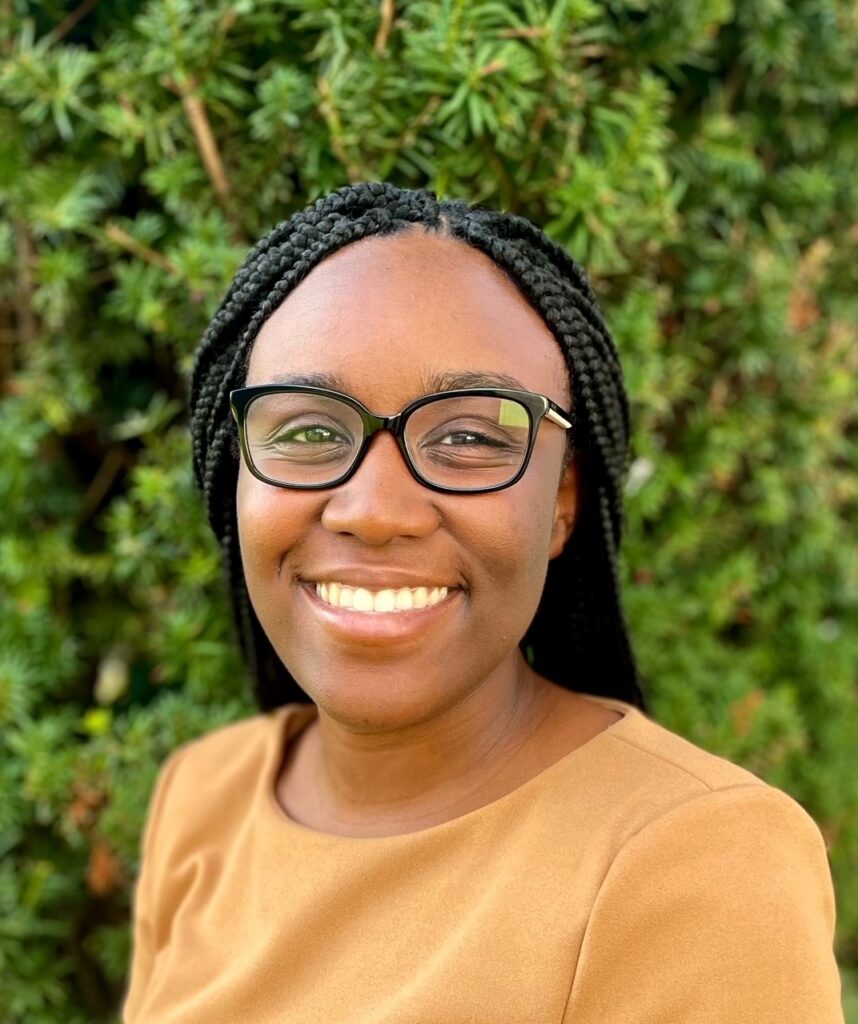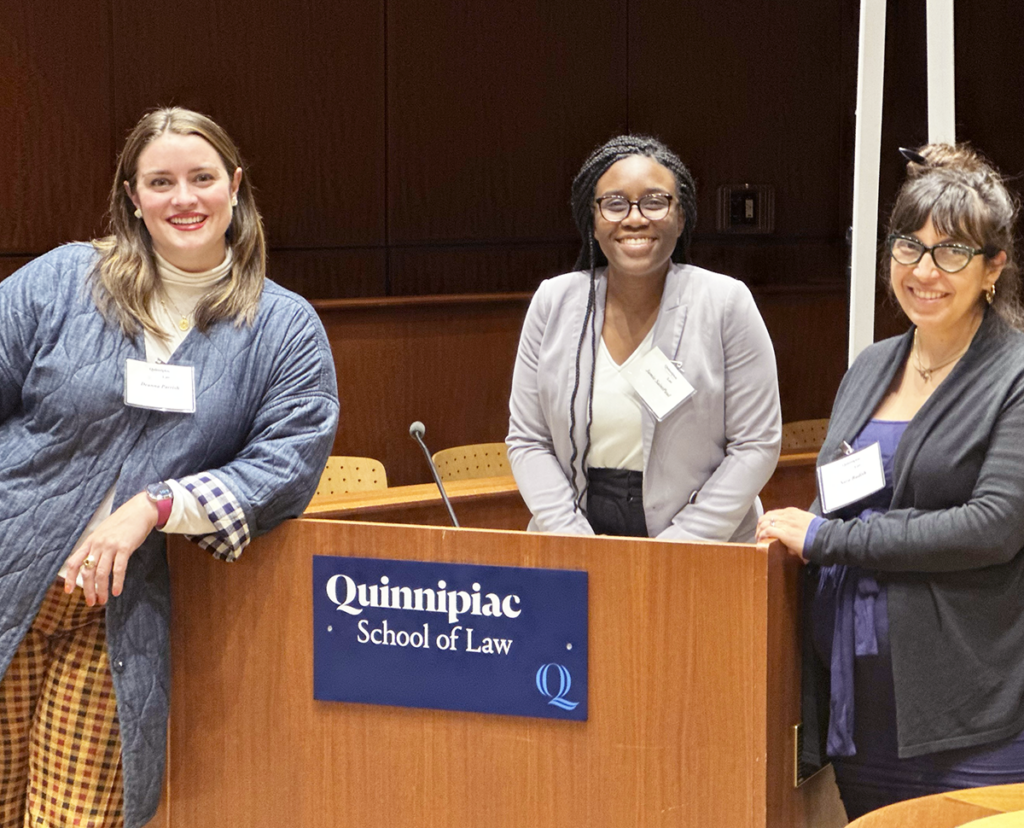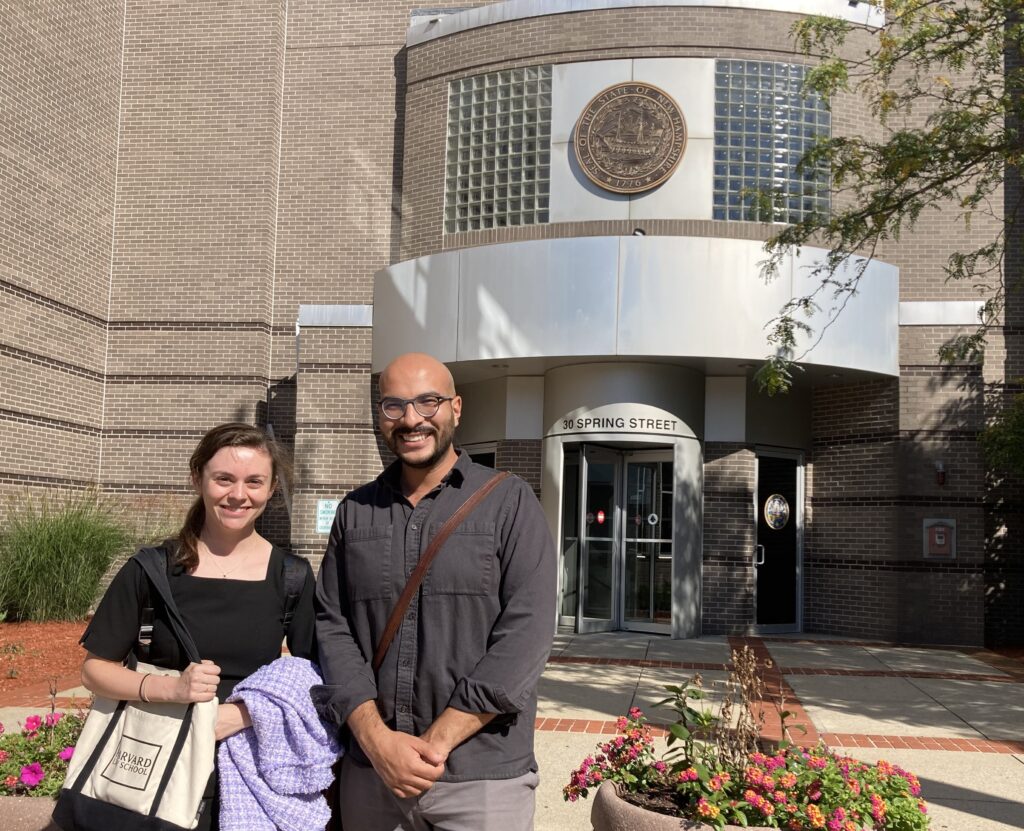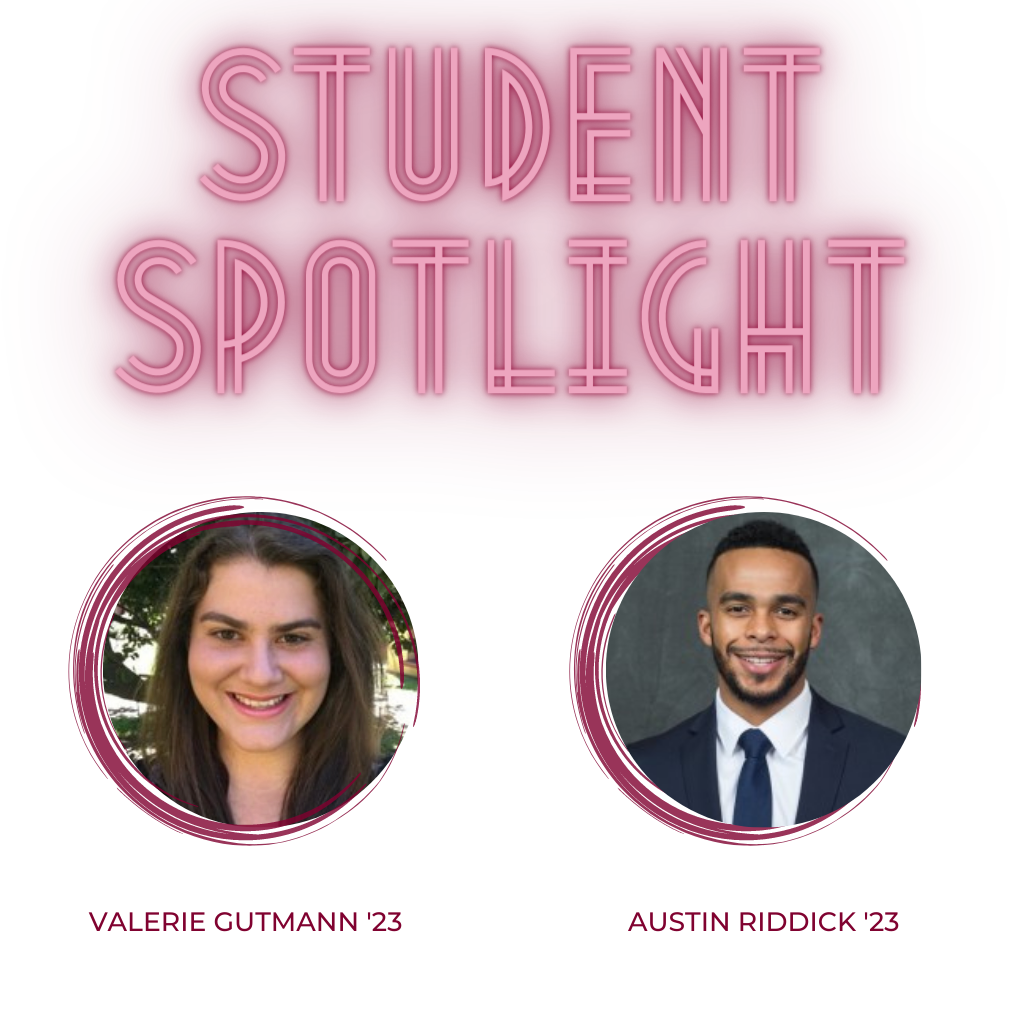We’re so pleased to feature Sydnee Robinson ʼ20 as our Student Spotlight this spring.
Sydnee was a student in the Dispute Systems Design Clinic this spring semester and served on the board of the Harvard Negotiation Law Review as Symposium Chair and as Managing Editor. Sydnee’s fierce and compassionate pursuit of justice benefits all who cross her path. She is a highly sought-after teammate, researcher, and practitioner, respected not only for her intellect, but also for her dedication to equity in all forms. Her colleagues, both in the classroom and outside of it, look to her as a thought leader who can raise difficult issues, often conveniently overlooked, and to navigate them with gentleness. Her balance of empathy and assertiveness is exceedingly rare: she makes space for others’ perspectives while remaining firm in her own hard-earned vision of justice, always inviting others to join her in her fight. We are lucky to learn from and alongside Sydnee as she works towards the world we all deserve.
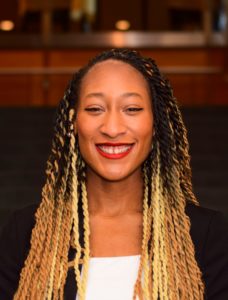 We caught up with Sydnee in a rare free hour right before exams from her parents’ home in California, where she is riding out the Coronavirus quarantine.
We caught up with Sydnee in a rare free hour right before exams from her parents’ home in California, where she is riding out the Coronavirus quarantine.
HNMCP: When you were a student in the Dispute Systems Design Clinic you worked on a project with the Center for Conflict Resolution (CCR), which provides free mediation services for issues of community concern across the Circuit Court of Cook County, Illinois. What is the goal of this undertaking?
Sydnee Robinson: Our goal is to optimize the way that CCR mediates Stalking/Non-Contact order agreements. It sounds intense and confusing. How can you mediate stalking? So, part of our goal is to assist the domestic violence court and our clients in clarifying when a dispute should be sent to mediation: When does a case have a domestic violence element and when is it something that can be mediated? When is there an intolerable or illegitimate power imbalance and when is it a conflict between people who just aren’t getting along or are miscommunicating? Legal theory is at the core of our project, but we are also balancing our reliance on theory with the reality of the situation.
We’re also grappling with how CCR can build more trust in the community where they mediate. They are mainly working in communities that are black and Latinx. But most of CCR’s mediators are volunteers and do not, generally, match the racial or economic profile of the majority of the parties for whom they mediate.
HNMCP: Are you helping them to think through how to get representative mediators?
Sydnee: Yes, CCR asked us to help them think through this as well. We used a few academic articles to look at the subject (one by HNMCP clinical instructor Andrew Mamo, and one by former professor at the University of San Francisco Law School Trina Grillo) to understand how to shape and amend their systems to resolve this. For example, Trina Grillo’s article is specific on informal laws of mediation and how mediators can be aware of how they are contributing to inequitable power dynamics—both between mediators and parties, and between the parties themselves. It’s very instructive on how parties, even if they were sent to mediation by a judge, can have more power in the conversation that they might have otherwise (e.g. women getting a divorce). I think the recommendations that stem from it will be really helpful.
HNMCP: What’s been the most impactful part of this for you?
Sydnee: Being able to see mediation as a space where a lot of good could come. It’s a really tricky space. Mediation could be very harmful or it could be everything it’s supposed to be, giving control back to people. It’s different to be able to see an area of law so starkly, or from what seem to be competing angles. This experience has given me a window into a type of legal practice I hadn’t gotten before. Many aspects of law school have been presented in a very “night or day” way; everything is good or bad. But this project revealed how something could be both good and bad at the same time, how to sit with the tension that creates, and how to use that tension and perception to find new ways to improve that thing.
Of course, there is always a challenge in trying to do something in a new way, but it felt really good. I found myself being subsumed in the work. I enjoyed being a “consultant” as opposed to being an “attorney.” In a lot of legal work, you’re looking to precedent, using precedent or building on precedent to make an argument—it’s all based on the past, it can feel difficult to get a new argument in. But in consulting, we were met with a problem and we had the freedom, even the mandate, to look at it in new ways to find a solution. I wish this was highlighted at law school more. Although negotiation does get attention at law school, this larger way of thinking, of problem solving creatively, needs more focus.
HNMCP: What made you choose the Dispute Systems Design Clinic?
Sydnee: Last fall I was reading the course description for Principles of Dispute Systems Design. I wanted to take this seminar but my schedule was already full. In reading the description of that course, I saw the description of the DSD Clinic. I was drawn to the way it talked about how institutions address conflict. This resonated with me, since that has been a main focus of my studies. I’ve primarily studied race and gender at HLS and how the court as an institution addresses inequity as a dispute. I’d been interested in learning how the court system works and where the most impactful place in it was to effect change. So, when I saw the clinic, I was excited about potentially learning how to design a system in the first place—how could I design and affect an entire system? It’s like asking a magician how to do his trick or taking a pen apart to see how it works. I wanted to “open up” an actual system and see how it’s put together. I thought it would also be a great way to remain involved with the community of negotiators and mediators on campus, a community I’ve really enjoyed being a part of.
HNMCP: How do you see these skills fitting in with your work after law school?
Sydnee: I’d ultimately like to be a city attorney, be able to look at the system of city governance and talk to stakeholders about how to fix their part of it, or be a stakeholder myself. I think I encountered this field too late in my law school career to be able to go right into it. However, I am looking forward to practicing. It will be helpful to get more experience in different roles in the legal profession before specializing in systems design.
HNMCP: While respecting client privilege, what were some rewarding and challenging experiences you had in your clinical work that you felt helped you move forward in your growth as a lawyer?
Sydnee: I have that feeling like I just ran a marathon. It was really hard work, very rewarding work, and it was significant. I think our recommendations and research will be heeded and implemented. The timing of COVID-19 is very unfortunate—we were supposed to do a second site visit to give a more formal presentation to our client and to a few domestic violence court judges. I did something similar in a previous position and they were appreciative, and it felt final and real, like we’d contributed. We will be giving a Zoom presentation now, but it’s disappointing not to be able to have that wrap-up piece in person.
HNMCP: You’ve had to conduct about half of this project from quarantine, due to the Coronavirus. What has that been like?
Sydnee: We Zoomed a lot! We still had a few stakeholder interviews after we left campus. One was a key interview, so I was pleasantly surprised it happened. I really wish we could have done a second site visit to give our presentation, but I’m so grateful we were able to visit in late February, right before the quarantine. If we hadn’t gone then, we couldn’t have seen every part of the process. Most of the time since has been working remotely from my other two teammates, editing the report, figuring out how to structure our findings.
I’m really grateful to my teammates, Daniel Sylvia and Lucy Prather, and to Deanna Parrish, our supervisor, who are just amazing. I appreciate how willing they were to have difficult conversations and follow them up with action, even on how to bring them up with our client. Many people don’t want to talk about inequity, so they don’t. But then they miss a key element that would really improve a program. CCR has been great as well. CCR has really opened its arms to our suggestions and recommendation and had even tried some of the solutions we initially suggested in the past. It’s been fun and inspiring to work for clients that are genuinely trying to improve the communities they serve.
That said, it has actually been less stressful to be at home than in Boston for me. There’s more space, it’s easier to take care of my dog, and I’m glad I can be back home with my parents. My mom is a healthcare worker and my parents are in their 60s, so I was so nervous to be so far away from them. It’s been much less stressful to be near them than across the country.
HNMCP: You are the Managing Editor of the Harvard Negotiation Law Review this year. And last year you organized and executed their symposium, “Redressing Harm Through Restorative Justice.” Tell me more about your interest in this particular dispute resolution alternative to criminal and post-criminal contexts.
Sydnee: This past year was difficult—the symposium was cancelled because of COVID-19.
For the symposium last year I worked very closely with Adriel Borshansky, the 2018–19 supervisor for HNLR, as well as a student from the Harvard Divinity School, Shannon Schmidt. I was grateful for how much freedom the Editors-in-Chief, Vicky (Levina ‘19) and Basil (Williams ’19), gave us over the symposium. It became an important space to work out questions I had, arising from the dominant conversations on campus. In most conversations about race the goal is decarceration and decriminalization. In most conversations about gender the goal is ending sexual harassment and ensuring domestic violence victims are cared for and safe. However, when organizing the symposium, I hadn’t yet encountered a discussion of how the two conversations merge, or a space to bridge the two worlds on campus. So, I used the symposium to explore: how do we care for victims of crime in way that is not carceral and that does not reinforce the power imbalance they have been subjected to?
The big question for me became how can ADR address abuses of power? This topic was somewhat broad, so Adriel really pushed me to hone-in on one topic, not to be too theoretical, and to get more specific. So, I wanted to look at Restorative Justice for crimes of violence. Then, Adriel, Shannon, and I looked at the roles in the criminal justice system— asking can we talk to judges, prosecutors, public defenders, academics, community mediators? And we built our panels from there. We wanted to invite actual parties too, because the whole program is for them, but they were the hardest group to identify and invite.
Seeing the ADR community show up, get involved and get interested in it with me, was a really great feeling for me. It was a tremendous way to learn how to do something like that. I didn’t have to feel so afraid of failure that it prevented me from doing it. The Program on Negotiation helped so much with funding and support. A lot of the adjacent consulting communities, as well as Triad, the consulting group led by my professor from the Negotiation Workshop, Debbie Goldstein, helped with funding. HNLR aand the Harvard Negotiation & Mediation Clinical Program helped with volunteers, advertising, and event management as well. The community’s interest made me feel like I was contributing.
HNMCP: What is an important leadership lesson you’ve learned through your work in dispute resolution spaces at HLS?
Sydnee: Maybe the first, and most powerful, moment was in the Negotiation Workshop. It sparked my interest in intersectionality and ADR. It was the simulation called Pandora’s Box where we role-play attorneys for clients with a patent. I was negotiating with the other student attorney, and he was saying things that didn’t align with the materials we’d been given. I knew this because I was so nervous about the subject matter that I had taken a lot of time and effort to understand the facts of our case beforehand. And in that moment, I knew he was wrong, and I spoke up. I thought, “I can totally do this. He’s wrong and I need to say something or else my client won’t get what she needs.” Because the Workshop is taken very seriously, the simulation functioned practically, instead of just theoretically or academically. So, I was able to have an experience that revealed that confidence and to stop second-guessing myself.
HNMCP: Any advice you want to share with the continuing and incoming students at HLS?
Sydnee: In her book Emergent Strategies, Adrienne Maree Brown describes a long list of things our culture teaches us that are detrimental. The last one on the list has really gripped me. She writes: “Perhaps the most egregious thing we are taught is that we should just be really good at what’s already possible, to leave the impossible alone.”
I would encourage them not to be dissuaded from trying to improve society, or making it more equitable, and not to leave what seems impossible alone

